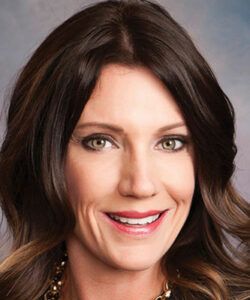Women face speed bumps en route to business success

Rosie the Riveter encouraged women to head to the factories and shipyards during World War II, but if she were pictured on posters today, she’d have to show more than biceps to break through the limiting factors female entrepreneurs and business professionals encounter.
The statistics of women-owned businesses only begin to tell part of the story of the modern Rosie.
In 2017, 1.1 million employer firms were owned by women, according to the U.S. Census Bureau’s 2018 Annual Business Survey released in May of this year. Also using numbers from 2017, the National Association of Women Business Owners found that 11.6 million businesses were owned by women, employing 9 million people and generating $1.7 trillion in sales. American Express reports that in 2019, women owned 42 percent of businesses, according to its State of Women-Owned Businesses Report.
SPONSORED CONTENT
People Powered: Preparing Longmont Businesses for Economic Success
Longmont Chamber and FNBO present People Powered on April 24, 2024, aiming to inform business owners about workforce development, housing, and transportation issues.
Beyond these numbers, what does it actually mean to women who own businesses, hold corporate leadership positions or are working their way up their career ladder?
The obvious come to mind, such as women juggling work with child care and elder care, taking breaks from their careers to raise families, failing to receive pay equal to their male counterparts, and hitting the glass ceiling that presents a barrier to advancement in their professions. They also may work in male-dominated fields and not have opportunities to work with other women in mentoring capacities or have a female buddy to chat with during lunch or a coffee break.
An issue that career counselor Katy Piotrowski sees multiple times with her female clients is they’re not being taken seriously in jobs that are traditionally filled by men.
“I’ve had numerous female clients jump off career tracks because their contributions were belittled, or credit and advancement opportunities went overwhelmingly to men. They just get sick of banging their heads against the wall and decide to walk away,” said Piotrowski, a licensed professional career counselor and certified resume writer with Career Solutions Group in Fort Collins. “On that same line, because in many male-dominated disciplines there are so few women, there is no support network to help women stay engaged and moving forward. There’s strength and success in numbers, and for women climbing the ladder, that frequently doesn’t exist.”

Carrie Pinsky, also a career counselor and principal of Pink Sky Career Counseling in Fort Collins, sees something similar with some of her clients who want to advance in their careers but do not have access to female mentors who are in senior leadership roles. There are few women in those higher-up positions, resulting in fewer opportunities for career support, professional development and peer-to-peer conversations, she said.
Women who get that mentoring can learn how to be assertive by being self-advocates, advocating for others and speaking up in meetings and during negotiations for things like salary and benefits, Pinsky said.
“Through professional coaching, women can gain the confidence they need to step into positions of power,” Pinsky said. “In today’s workplace, what is considered acceptable behavior for a man in power might not always be considered acceptable coming from a woman.”
Women driven to advance in their careers or to own their own businesses, as well as women wanting to maintain their current positions, face what Fort Collins business owner Cindy Skalicky calls internal and external barriers.
“The internal barriers have to do with what do I want for my life and career? What are my key priorities right now?” said Skalicky, owner of On Point Communications, which provides public speaking coaching and brand consulting to individuals and corporate teams.
Skalicky found from her conversations with hundreds of businesswomen that they question if they are doing the right thing, especially if they have children at home. They need to have self-awareness of their goals and be at peace with their decisions, she said. To do this, they can create a personal life plan and chart out what they want their life to look like, she said.
“There’s a constant feeling of what’s the right balance of time and attention to my children before they grow and go and what’s the right balance for my career,” Skalicky said. “If you’re a mom and you have a family, it’s far more than securing childcare and day care; it’s also balancing the demands of home and family with the opportunity to grow in your business.”
Oftentimes, it’s on the women to decide to stay at home to raise the children or immediately return to the workforce without stepping back from their careers, Skalicky said. Other external barriers include equal pay, the glass ceiling and how women are viewed in business — such as being more emotional than men, she said.
“There’s a set of expectations for women in the workplace and a set of expectations for men and that can be challenging to navigate,” Skalicky said.
Along those lines of expectations there are different leadership styles, such as a feminist leadership style that is collaborative and inclusive, Pinsky said. Starting at a young age, girls can begin to develop leadership skills by being encouraged to raise their hands and ask questions, she said. As they enter college or the workplace, young women will be more likely to speak up, she said.
The goal is to raise awareness of gender stereotypes and the many ways that women might be subtly discounted and not honored for the unique leadership style they bring to the table, Pinksy said.
“It has to start at the personal level,” Pinsky said. “Once women can start making effective change and landing senior roles, they will open up opportunities for other women. We need more women in positions of power who will fight for equal opportunities for all.”
As such, women face structural systemic inequality with a larger percentage of men in higher-up positions, making it more difficult for them to move up the corporate ladder.
“A lot of it is because men are gatekeepers,” said Madigan Turnquist, career education coordinator at the Colorado State University Career Center. She has researched equity in the workplace. “Research shows that at every level of leadership, women are less likely to be promoted.”
The more women advance in their careers, the more the disparity increases in the ratio of men to women, Turnquist said.
“One of the reasons it’s difficult for women to progress is networking and affinity bias,” Turnquist said, referring to a phenomenon where those in a position to promote or hire make decisions based on having affinity with those similar to them instead of based on the best fit for the position description.
Other reasons include waiting to fully qualify before applying for positions and balancing being assertive and confident with being likeable in order to meet the expectations of others, Turnquist said. That’s why mentorship is important, as well as reporting achievements to superiors, learning negotiation skills, being aware of workplace rights and having the confidence to apply for positions with some, but not all the qualifications, she said.
“You don’t have to act like men to be successful,” Turnquist said. “There’s a lot of value in the way women lead. … Female leadership is shown to be objectively a good business strategy.”

Brandy Natalzia, a real estate transaction attorney for Brinkman in Fort Collins, finds that in commercial real estate, there are fewer women working in the industry than men. One way to overcome this is to encourage more women to work in the various areas of the industry from sales to law and help bring them through the ranks, she said.
“If you have limited seats at the table, you don’t have a lot of people to show you where you need to go,” Natalzia said. “The benefit of having a mentor or at least someone who has your back can help guide you through the process.”
Natalzia focused on having the confidence to balance work and life, speak up in a room predominantly consisting of men, and continue to learn in her field, she said. She also engages in networking, which is another way for women to gain opportunities, since women tend to want to build relationships and support one another.
To do this, Natalzia joined Commercial Real Estate Women, or CREW, in 2015 to be able to network with the membership, predominantly consisting of women and a few men.
“The amount of deals that get done within that group or using that group as sources is incredible,” Natalzia said. “It’s that networking, having a source of referrals makes being in this industry so much easier if you know who to go to.”
Rosie the Riveter encouraged women to head to the factories and shipyards during World War II, but if she were pictured on posters today, she’d have to show more than biceps to break through the limiting factors female entrepreneurs and business professionals encounter.
The statistics of women-owned businesses only begin to tell part of the story of the modern Rosie.
In 2017, 1.1 million employer firms were owned by women, according to the U.S. Census Bureau’s 2018 Annual Business Survey released in May of this year. Also using numbers from 2017, the National Association of…
THIS ARTICLE IS FOR SUBSCRIBERS ONLY
Continue reading for less than $3 per week!
Get a month of award-winning local business news, trends and insights
Access award-winning content today!

